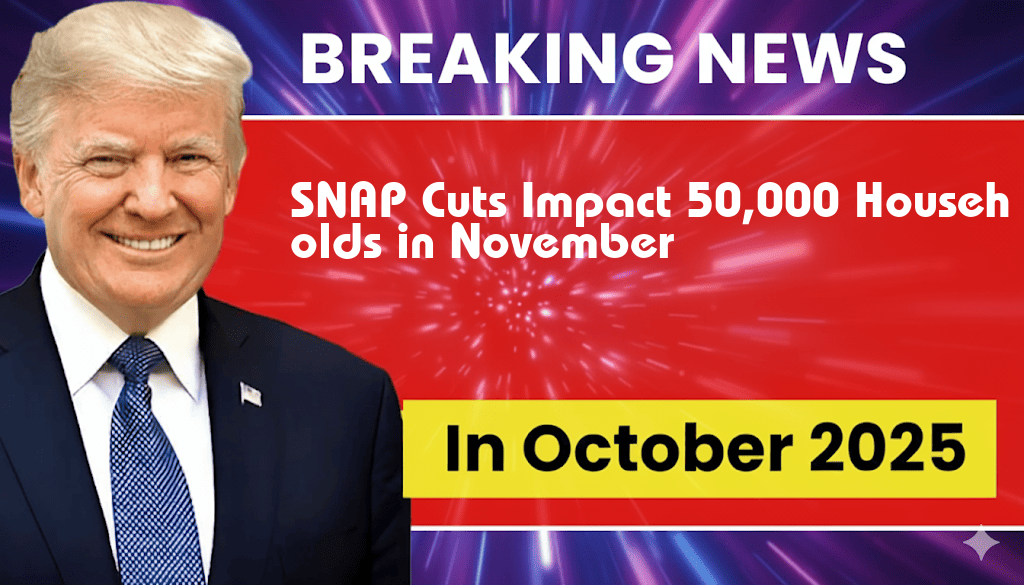Beginning this November, approximately 50,000 households across the United States will experience a significant reduction in their Supplemental Nutrition Assistance Program (SNAP) benefits. The monthly assistance will decrease by $58, impacting many families that rely on these funds for essential groceries. This reduction is part of an ongoing reevaluation of federal assistance programs, as the government seeks to manage budgetary constraints while still addressing food insecurity. As inflation continues to strain household budgets, this change raises concerns about the ability of vulnerable populations to afford adequate nutrition.
Details of the SNAP Reduction
The $58 cut in SNAP benefits is a result of adjustments made by the U.S. Department of Agriculture (USDA). This change affects households that have received increased benefits during the pandemic, which were designed to help families cope with economic hardships. As part of the transition back to pre-pandemic levels, the reductions began being phased in earlier this year.
Impact on Households
The reduced monthly allowance is expected to have a ripple effect on families who depend on these funds to meet their nutritional needs. Many beneficiaries may have to reassess their food budgets and make difficult choices about where to cut expenses. According to recent reports, families using SNAP will find it increasingly challenging to afford a balanced diet.
- Barely scraping by: Many families may turn to local food banks and community resources to supplement their grocery needs.
- Increased food costs: Inflation has already raised the prices of basic food items, compounding the effects of the benefit reduction.
- Potential health risks: A decrease in food security can lead to negative health outcomes, particularly among children and the elderly.
Community Response
Local organizations and food banks are preparing for an influx of families seeking assistance as the benefit cuts take effect. Many are ramping up efforts to provide food supplies and support services to help mitigate the hardships. Community leaders are urging residents to be aware of the available resources.
“We are doing everything we can to prepare for the increased demand,” said Maria Lopez, director of a local food pantry. “These cuts will affect families already struggling to make ends meet, and we want to ensure they have access to nutritious food.”
Government Programs and Future Outlook
As the impact of the SNAP reduction unfolds, government officials are under pressure to address food insecurity proactively. The USDA’s recent actions have sparked discussions about the long-term sustainability of SNAP and other assistance programs.
Potential Policy Changes
Advocates for food security are calling for reforms that focus on increasing benefit levels and expanding eligibility. They argue that the adjustments made during the pandemic should be maintained or even increased to reflect current economic realities.
“We need to look at the data and understand that the cost of living has changed dramatically,” said food security advocate James Turner. “Policies must evolve to meet the needs of vulnerable populations.”
Resources for Affected Households
For families facing difficulties due to the reduction in SNAP benefits, several resources are available:
- USDA SNAP Eligibility – Information on eligibility and how to apply for SNAP benefits.
- Feeding America – A national network of food banks providing assistance and resources.
- NYC Human Resources Administration – Local support services for SNAP recipients.
Conclusion
As SNAP benefits decrease this November, the 50,000 households affected will face new challenges in securing food for their families. The response from community organizations and advocacy groups will be critical in helping these families navigate the changes and maintain access to essential nutrition. With rising food costs and the ongoing struggle against food insecurity, the need for comprehensive support and policy reform has never been more urgent.
Frequently Asked Questions
What is the reason for the $58 monthly SNAP reduction this November?
The $58 monthly SNAP reduction is part of a broader effort to adjust benefits based on changes in the economic landscape and budgetary constraints faced by the program.
How many households will be impacted by the SNAP reduction?
Approximately 50,000 households will experience the reduction in their monthly SNAP benefits starting this November.
What can affected households do to manage the reduction in SNAP benefits?
Affected households are encouraged to create a budget, seek additional food assistance programs, and explore local food banks to help manage the impact of the SNAP reduction.
Is the SNAP reduction permanent or temporary?
The SNAP reduction is currently set to take place this November, but the permanence of this change will depend on future evaluations and decisions made by government agencies.
How can individuals find more information about their SNAP benefits?
Individuals can find more information about their SNAP benefits by visiting the official state website or contacting their local SNAP office for assistance and updates on their situation.

Leave a Reply